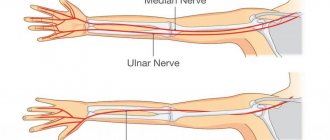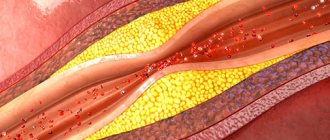What is algophobia
The name is derived from the ancient Greek words ἄλγος, meaning "pain", and φόβος, meaning "fear". Algophobia is a panicky fear of pain. In some sources you can read that algophobia is a fear of cold. In fact, the fear of cold is called cryophobia.
Algophobe suffers from irrational anxiety and cannot get rid of it. A person avoids situations in which he is likely or potentially likely to experience even the slightest pain. Each patient has his own list of situations, types of activity, objects and objects that are perceived as dangerous.
Examples of threatening objects and conditions:
- street (fight, dog attack, sprained leg, accident, etc.);
- extreme sports;
- cooking (knives, other objects that can hurt you);
- construction and any repair work;
- public places and public celebrations;
- competitions;
- much more.
Some are afraid of getting sick and experiencing pain, others are afraid of pain during death or during sex. Others are tormented by the thought: “How to give birth without fear and pain.” Some people only experience fear of toothache. And someone does not care about physical pain, but is tormented by the fear of the pain of life, suffering, despair, disappointment, etc. Often the fear of moral pain triggers the emergence of other fears. For example, some women are afraid of divorce due to fear of mental pain. And some are even afraid not to feel pain, but to cause pain to another.
Essentially, an algophobe is afraid of the whole world. It's no joke, because you never know that your tooth will hurt, or that you will step on something hard and sharp. In dangerous situations, panic attacks occur; at these moments a person is not at all aware of his actions, afraid of dying or going crazy.
It is important! Due to the specifics of algophobia, it can be confused with another fear, for example, with oxyphobia - fear of sharp objects. Or with a fear of heights, doctors, etc. In women, this can be confused with tokophobia - the fear of childbirth.
How does fear of pain manifest itself?
An algophobe avoids meeting an irritant and suffers from increased anxiety when forced into contact with it. Fear of pain reduces the quality of life and isolates a person from society.
Fear of pain is manifested by other fears, which are also manifestations of phobias:
- fear of places with large crowds of people;
- fear of places that pose a potential threat;
- fear of sports, extreme types of recreation.
A person tries to avoid anything that carries a potential threat of falling, injury, etc.
At the physical level, fear of pain manifests itself in the same way as other phobias: tachycardia, a feeling of suffocation, headache, dizziness, nausea, numbness, muscle aches, increased sweating.
Associated disorders
Fear of pain is often combined with a fear of sharp objects (eichmoobia). This combination of fears significantly interferes with everyday life. It also affects health care. Some aichmophobes and algophobes refuse to go to the dentist and cannot undergo the necessary operation.
Meanwhile, modern anesthesia allows you to carry out any manipulations with the body without the slightest discomfort. And the patient knows this, but the psychological part of the phobia makes itself felt. The patient is afraid that anesthesia and anesthesia will not work or will work partially, which will then be followed by pain. Against this background, panic attacks develop. A person is afraid of dying or going crazy.
Tokophobia is a type of fear of pain.
Tokophobia – fear of childbirth. They say that the pain of childbirth is second only to the pain of being burned alive. It really does sound scary. Because of this belief and stories from friends who have given birth, some women are afraid to give birth. “How to survive childbirth if you are very afraid of pain?” is a question asked by every seventh woman. There are a few things you need to know to overcome tokophobia.
How to stop being afraid of pain during childbirth:
- Childbirth is a natural biological process. Nature has thought of everything: it has endowed women with a lower sensitivity threshold and ensured hormonal and physiological changes in the body during pregnancy and childbirth.
- If the process turns out to be too painful for a particular woman, then doctors will come to the rescue: they will give an anesthetic injection, teach them how to breathe and push correctly, and, if necessary, perform a caesarean section.
Doctors will not allow the woman to lose consciousness, much less die. Specialists will help you give birth without pain and fear. Additionally, you can attend psychological and medical courses in preparation for childbirth.
Causes of fear of pain
Most often, algophobia develops against the background of personal psychological trauma, that is, a person is tormented by memories of pain due to a blow, burn, fracture or other physical injury. Or the algophobe saw someone suffering from pain, becoming angry and irritable due to illness. In this case, there may still be an irrational feeling of guilt. One way or another, a traumatic shock can happen in childhood or in adulthood.
The second version of psychotrauma is systematic exposure to a stress factor. For example, a fear of pain may develop in a person who was often beaten and punished by parents or other people. In most cases, this refers to childhood memories, but this can also happen in adult life (captivity, torture, mobbing).
Other causes of fear of pain:
- low pain threshold as a feature of the body;
- presence of chronic diseases;
- sadomasochistic tendencies (Freud's theory of repression of forbidden desires);
- an attitude towards self-destruction and dissatisfaction with life (protective fear that a person will not do anything to himself);
- aggressiveness and asocial orientation of the individual (fear restrains destructive impulses, the person is afraid of punishment).
Algophobia is often combined with other fears, for example, fear of death. Or the fear of pain has a more specific manifestation, for example, a person is worried not by the fact of pain itself, but by the fear that it will not stop, or that he will remain disabled and will be in a humiliating position.
This is interesting! Psychologists note that modern people are more afraid of pain than our ancestors. The thing is that the current generation is accustomed to comfort and convenience, so at the slightest hint of pain they run to the pharmacy or hospital.
What are the benefits of fear of pain?
Algophobia (alginophobia) is one of the fears with an ambivalent meaning. Normative fear of pain has a positive effect:
- Connection with the instinct of self-preservation. Fear of pain protects us from rash and dangerous actions. For example, a person will not bungee jump or parachute jump.
- Mobilization of resources. Anticipation of pain is stressful. In a single stressful situation, the body’s forces are maximally activated. For example, in a fight it helps to fight back.
- Behavior correction. Fear of physical punishment can force one to give up antisocial, unwanted actions.
- Help with social adaptation. We remember the pain and it helps in the future. For example, if a child burns himself on a hot kettle, then in the future he will use an oven mitt.
- Help in development. Fear of pain and punishment forces us to look for missing information and come up with new ways to solve problem situations. Knowledge, skills and abilities are mobilized and expanded.
Thus, pain is associated with the instinct of self-preservation, socialization and personality development.
It is important! Treatment of a phobia does not mean completely getting rid of fear, but bringing it to the level of a useful norm.
Signs and symptoms of fear of pain
The main symptom of algophobia is irrational anxiety in front of potentially dangerous situations and avoidance of them. For example, algophobes put off visiting a dentist or other doctor until the last minute. If an algophobe nevertheless finds himself in a frightening situation, then he is seized with panic.
During a panic attack, somatic deterioration is noticeable:
- tremor;
- shiver;
- chills;
- tachycardia;
- arrhythmia;
- cephalgia;
- chest pain;
- breathing problems;
- sweating;
- nausea;
- dry mouth;
- presyncope and fainting.
All this further worsens a person’s mental state, because he understands that in these seconds he is closer than ever to what he is afraid of – pain.
Diagnosis of phobia fear of pain
As we have already said, algophobia can be confused with other fears, and it is often combined with other phobias. This makes diagnosis difficult and makes self-diagnosis impossible. There are no special, officially accepted tests for identifying algophobia.
To make a diagnosis, you need to see a psychotherapist. The specialist collects anamnesis, assesses the patient’s condition from his words and based on the results of his observation. It is important to establish that the issue is precisely fear, that there is no connection to individual conditions or a group of objects.
Don't let the pain go
Doctor-algologist answered the main questions about what to do if you feel pain
For most people, even at a young age, something causes persistent discomfort: pulling, aching, stabbing, pressing... It hurts! Today - the head, tomorrow - the lower back. We begin to perceive pain as a natural companion of life, habitually complain about it, and take painkillers. However, pain, like any problem, if ignored for a long time, becomes a diagnosis, and often a serious one.
What in general can pain that arises inside the body or “external” mean, for example, pain in the shoulder, numbness of the fingers or a “banal” headache? Do I need to swallow pills right away to reduce pain? Or should I see a doctor first? Then which one? It turns out that today there is such a “narrow” specialty - an algologist (he deals with the clinical diagnosis of pain and the relief of pain symptoms). We found such a doctor.
“For any pain, I would not recommend mindlessly taking pills,” said our expert, algologist, anesthesiologist-resuscitator, candidate of medical sciences, head of the Pain Clinic of the Center for Endosurgery and Lithotripsy (CELT) Alexey VOLOSHIN . — The pills quickly stop helping, restful sleep disappears, and irritation appears. And when the state approaches panic, endless visits to doctors begin. The patient is prescribed massage, acupuncture, and conventional painkillers (sometimes quite serious). And when all this doesn’t help, they tell him: “Suck it up, we’re all not getting any younger,” or: “With age, both here and there can hurt.”
But why put up with pain? Why endure? How will this be justified if sooner or later you still have to turn to specialists? Understanding the importance of the problem and the scale of the disaster has led to thousands of dedicated pain clinics operating around the world. In large cities of developed countries today there are such clinics in almost every quarter. And in Moscow, our Pain Clinic at the multidisciplinary Center for Endosurgery and Lithotripsy successfully operates and returns people to normal life. There are ways when the pain is eliminated with one injection. These technologies are safe and effective, which is why they are widely used throughout the world. We use methods tested on millions of patients in other countries. But in our country, few people still know that pain can be safely eliminated even before its cause is identified. Specialists focus specifically on the source of pain.
- From this place, Alexey Grigorievich, please, in more detail. How can you deal with the “source of pain” if its cause has not been identified? If you don’t know, why does it hurt?
— We don’t say: “Be patient!” They do not conduct endless unnecessary examinations, do not prescribe mutually exclusive medications, but adapt to the situation of each patient. Take responsibility for the outcome of treatment. In our clinic, as in the practice of world medicine, we have long followed the principle: first, the pain should be removed, and then we should diagnose and treat the cause, and not vice versa, as is often the case. After all, sometimes finding the cause and selecting adequate therapy can take a very long time, during which the person continues to suffer and the disease progresses. Although often treating pain itself removes the cause.
Alexey Voloshin
For example, in case of shoulder pain, we inject into the joint capsule to relieve swelling and inflammation. That is, we simultaneously treat both the cause and the pain. Or, in case of a herniated disc, we inject the medicine directly to the place where the hernia compresses the nerve root. As a result, pain is relieved, muscle spasm, swelling and inflammation are eliminated. Then the person can normally engage in physical education and rehabilitation, and not clench his teeth while doing simple exercises. A rather important aspect of interventional pain treatment is the ability to repeat blockades several times without risk to health. And if neurosurgical treatment is still necessary, a course of blockades does not interfere with the operation.
— Has modern medicine really reached the point where it is possible to “permanently” remove pain with one injection? Somehow I can’t believe it...
— Yes, sometimes with one injection, sometimes with an injection and a blockade or a high-tech temperature effect on the nerve, pain is removed, spasm goes away, inflammation is relieved. Just one procedure can solve the problem for months or years. For example, during blockades we use the first medicine, which relieves pain, and the second, which finally solves the problem. After a long time of suffering, the patient does not even feel the prick, he only feels how suddenly something that tormented him for so long passes away. To be sure, immediately after the procedure we ask the patient to move around, do exercises, and feel what it is like to live without pain. This is not difficult, because the pain goes away right during the injection. Our goal is to give the patient the opportunity to manage their life. Of course, for this you need to have special equipment and trained specialists. These procedures are usually performed by anesthesiologists. But if all this is present, the pain can be eliminated immediately and forever.
— So, those patients who take traditional painkillers before consulting a doctor are only harming themselves? But the doctors themselves say: “The pain cannot be tolerated.” Allegedly, pain stimulates the death of nerve cells (neurons). Or is it all fiction? From ignorance?
— We were approached by such an “advanced” patient: a strong working man, 52 years old, let’s call him Stanislav Vladimirovich. For a long time he was bothered by pain in his shoulder. After watching enough advertising, Stanislav Vladimirovich himself “prescribed” a remedy for pain. And he began his treatment by buying and taking, buying and taking pills. Not only did long-term use of painkillers not help the problem, it became addictive to the drug. Soon the medicine completely stopped working and provoked the neglect of the disease, since for some time this patient felt relief from the drug. A lot of money was spent and time wasted. Along with the burden on the family budget, the danger of developing side effects also grew. We had to treat not only the shoulder, but also the consequences of the self-medication that the man prescribed for himself.
— But what are analgesics created for? Moreover, more and more of them are produced every year. And they are getting stronger...
— Yes, there is a wide choice of these drugs now. But if you reduce pain on your own, you can get yourself into trouble. Recently, a patient came to us with so-called abuse (“rebound”) drug pain. A paradoxical situation: prolonged uncontrolled use of painkillers in itself causes pain. A vicious circle arises: a person takes a painkiller to get rid of pain, but the pain not only does not go away, but also intensifies. We are not even talking about the fact that such self-medication can delay the diagnosis of a serious disease for a long time. Indeed, behind the first persistent pain, a tumor, an aortic aneurysm, and many other dangerous ailments can be hidden. There is only one way out - stop taking analgesics. And only a specialist can help with this. Therefore, we never tire of repeating to our patients: do not wait to the extreme, go to the doctor immediately when something hurts.
And uncontrolled use of analgesics can lead to the most dire consequences.
— I would like to talk about pain relief in oncology. For many patients diagnosed with cancer, pain is almost more frightening than the disease itself.
— Yes, despite the improvement of cancer treatment methods, up to 90% of patients require pain therapy in parallel with getting rid of a malignant tumor. In Russia, thousands of cancer patients suffer from chronic pain syndrome, requiring the use of combined methods of pain relief. Unfortunately, for a number of reasons, patients rarely receive the full range of possible pain treatment, although today in Russia the entire arsenal of means used to solve this problem seems to be available. Antipain therapy for these patients should be provided at all stages of the oncological process: from diagnosis to the terminal stage; outpatient or inpatient; including at the stage of preparation for the operation, preparation of the necessary documents or after the operation; during and after chemotherapy or radiation therapy.
Yes, doctors cannot always cure cancer, but there are technologies where a person can be given the opportunity to live peacefully and undergo treatment without pain. If it is not possible to cope with the disease, the person will still live the time allotted to him fully, without pain. And often this can be achieved even without the use of drugs, the situation with which in the country remains difficult.
— You talked about outpatient cancer treatment. Is that possible?
— Yes, today modern technologies make it possible to perform almost all interventional methods of treating oncology in a day hospital format. During the day, undergo treatment and return home in the evening. According to the latest scientific data, this regimen even increases the effectiveness of treatment for the patient, since the person does not experience stress. He feels comfortable having the opportunity to receive treatment without radically changing his familiar environment. The main thing is not to be late in seeing a doctor because you are afraid of injections or surgery. So that a benign disease with a good prognosis does not turn into a chronic problem, which becomes very, very difficult to cope with over time.
...It turns out that it’s not for nothing that popular wisdom says: “Give the pain free rein, it will kill you.” Living without pain is a natural human right of the 21st century. And doctors are obliged to provide him with this right. This is why entire clinics that have appeared in Russia operate. Including the CELT Pain Clinic.
Alexandra Zinovieva Published in Moskovsky Komsomolets on 10/23/2015
Treatment of fear of pain
From a therapeutic point of view, this is one of the most difficult phobias. The reasons for the fear of pain are not always on the surface; sometimes we are talking about hidden, complex psychological preconditions. This is important to consider when choosing treatment. For example, if the issue is sadomasochistic tendencies, a subconscious desire to experience or cause pain, then you need to understand the nature of these tendencies and fight it. Then the fear of pain will go away on its own over time, because the person realizes that he is in control of the situation.
In general, psychotherapy methods are used to treat algophobia: cognitive behavioral psychotherapy, NLP, hypnosis, systematic desensitization method, psychoanalysis, art therapy and others. In most cases, medication is indicated: sedatives, antidepressants. Read more about this in another article.
Note! Autogenic training helps well as self-help for fear of pain.
How to get rid of the fear of physical pain yourself
How to overcome and overcome the fear of physical pain? How not to be afraid of pain? You need to convince yourself that in everyday life it is extremely difficult to get such a portion of pain that you cannot withstand. Yes, it is very unpleasant, but you will not die if you hit your foot or hand.
If you are tormented by fear of pain during childbirth, it is important to remember that proper breathing and anesthesia can subside unwanted reactions. If you have a toothache or headache, you can also take a tablet. Of course, medications are an emergency measure. It is better to find a somatic or psychological cause of physical pain and direct your efforts to get rid of the root cause.
It is also important to remember that the physical reaction to the impact lasts only a few seconds, the emotional reaction lasts a maximum of 15 minutes. The rest of the time, people themselves “increase” the pain. That is, you decide for yourself whether to feel pain or not. By the way, the same rule is true for emotional pain, but we will analyze it separately.
How to get rid of the fear of mental pain yourself
How to overcome and overcome the fear of moral pain? Make friends with pain. Just as physical pain protects against something and warns you, mental pain indicates a current problem or helps you realize what is really important to you. Pain helps you prioritize.
Maybe you choose the wrong people or are too touchy. Maybe you yourself provoke people into conflicts, etc. Examine your pain and find what you really need to deal with. Pain is not an enemy, it is a friend, a guide.
How to get rid of the fear of hurting someone yourself
How to overcome and overcome the fear of hurting someone physically or mentally? You need to convince yourself that you cannot control other people's reactions and you cannot predict events. That is, you cannot know that some words will offend another person, you cannot sacrifice yourself to satisfy other people’s needs (for example, stay in a relationship, afraid of hurting someone else by breaking up).
If you are afraid of causing pain due to outbursts of aggression, terrible obsessive thoughts or something similar, then you should consult a psychologist. In any case, it is important to work with the root cause. You must analyze and understand what is hidden behind the fear of hurting another in your case. You also need to analyze the fear for validity. Why did you even decide that you could hurt someone? Has this already happened? Was this really your fault?
Fear of pain: what are you really afraid of?
People are afraid of pain in different situations: dental treatment, donating blood for tests, loss of virginity in girls, ear piercing, etc. But few people can decipher their fear. At best, people add that they are afraid they will not be able to withstand the pain. That is, they are afraid of losing consciousness. But if you think about it, this is not the only fear that is hidden.
The pain won't stop
It can not be so. If the pain is so severe that it cannot be tolerated, you will pass out and not feel anything. And if the pain is severe but tolerable, then you will find the strength to call for help, see a doctor, or eliminate the source of the pain yourself.
It's actually a fear of helplessness. You don't believe in yourself and don't trust other people. You think that neither you nor anyone else can help you. Think about where this mistrust and uncertainty comes from. Who or what formed such a picture of the world in your head.
Fear of death
The fear of death is common to all people. This is natural, in principle, like death itself. This is just one stage in the natural cycle of life. Consider whether you are increasing the likelihood of death due to your fear. For example, you are afraid of dying under the surgeon’s knife, and therefore you are postponing an important operation. If this is your case, then you need to fight the fear of death. To do this, you need to disassemble it into its components. What may be hidden behind it: the meaninglessness of life, distrust of the world, problems in the field of communications, childhood psychotrauma, fear of aging.
I will not be able to continue living a full life
Pain is associated with disability and restrictions. But what is a fulfilling life for you? What exactly are you afraid of losing? Are you living a full life now when, because of your fear, you refuse to meet with friends, you cannot build a personal life, or you are forced to quit your job? Life consists of ups and downs, every person has situations of despair and situations when he is not in the best shape. This is fine. You need to accept it and be ready to fight the difficulties.
Humiliation
If a person got sick, broke his arm or experienced other pain, then this did not make him a less worthy representative of society. Pain is associated with humiliation only among perfectionists and people with high demands on themselves and others.
How not to be afraid of pain and humiliation: Realize that being angry with yourself because of pain only leads to more tension and tightness of the muscles, which increases the pain. Allow yourself to be imperfect and accept yourself, your body, your organism.
Losing control
What does "lose control" mean? Will your mind turn off and you won’t be able to think rationally? In this case, reflexes and instincts will come to the rescue, and they are always interested in your safety.
Why is fear of pain dangerous?
Obsessive thoughts, panic fear and anxiety, somatic manifestations of fear interfere with leading a normal life and interfere with the socialization of the individual. Algophobe loses work, friends, entertainment. Algophobia is one of those phobias whose object is always nearby. After all, even at home a person does not feel safe: you can accidentally hit or stumble. Yes, of course, you can cover the walls of the house and the floor with soft fabric, take out all the furniture, etc., but this still will not save you from anxiety.
The situation is aggravated by the fact that psychological stress leads to real somatic deterioration, including pain. In addition to somatic diseases, secondary mental disorders, such as depression, develop due to stress. Without treatment, this can transform into suicidal tendencies.
Methods for diagnosing fear of pain
Diagnosing a phobia can be difficult because it is a symptom of many other disorders, such as insomnia and depression. Diagnosis is also complicated by the fact that the manifestations of phobia differ from case to case. Customer behavior also differs. Some are switching to remote work and locking themselves within the four walls of their homes. And someone is afraid only of extreme situations, but otherwise can live in peace. Therefore, diagnostic methods are selected individually, but the main method in each case is a conversation between a psychologist and a client.










